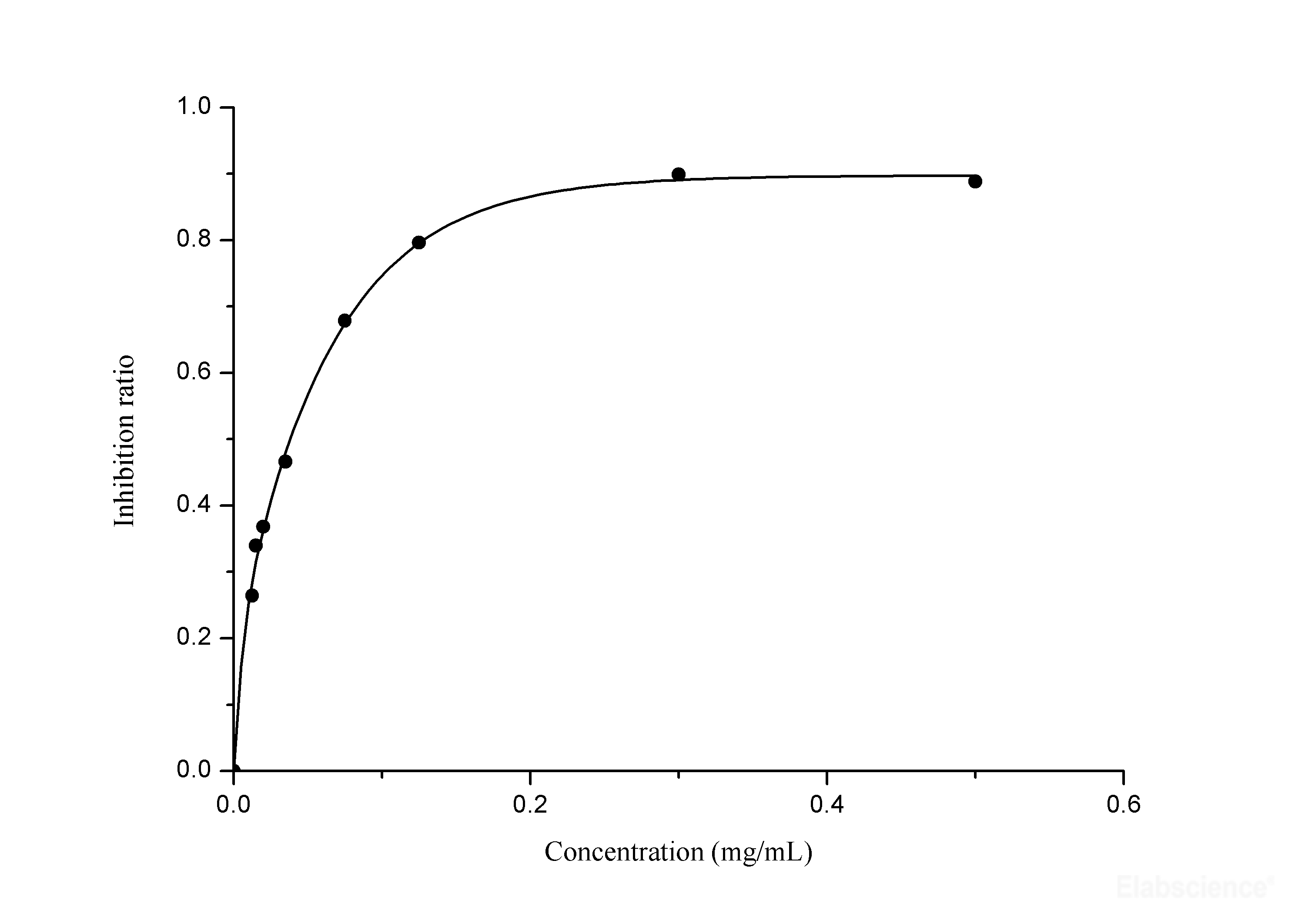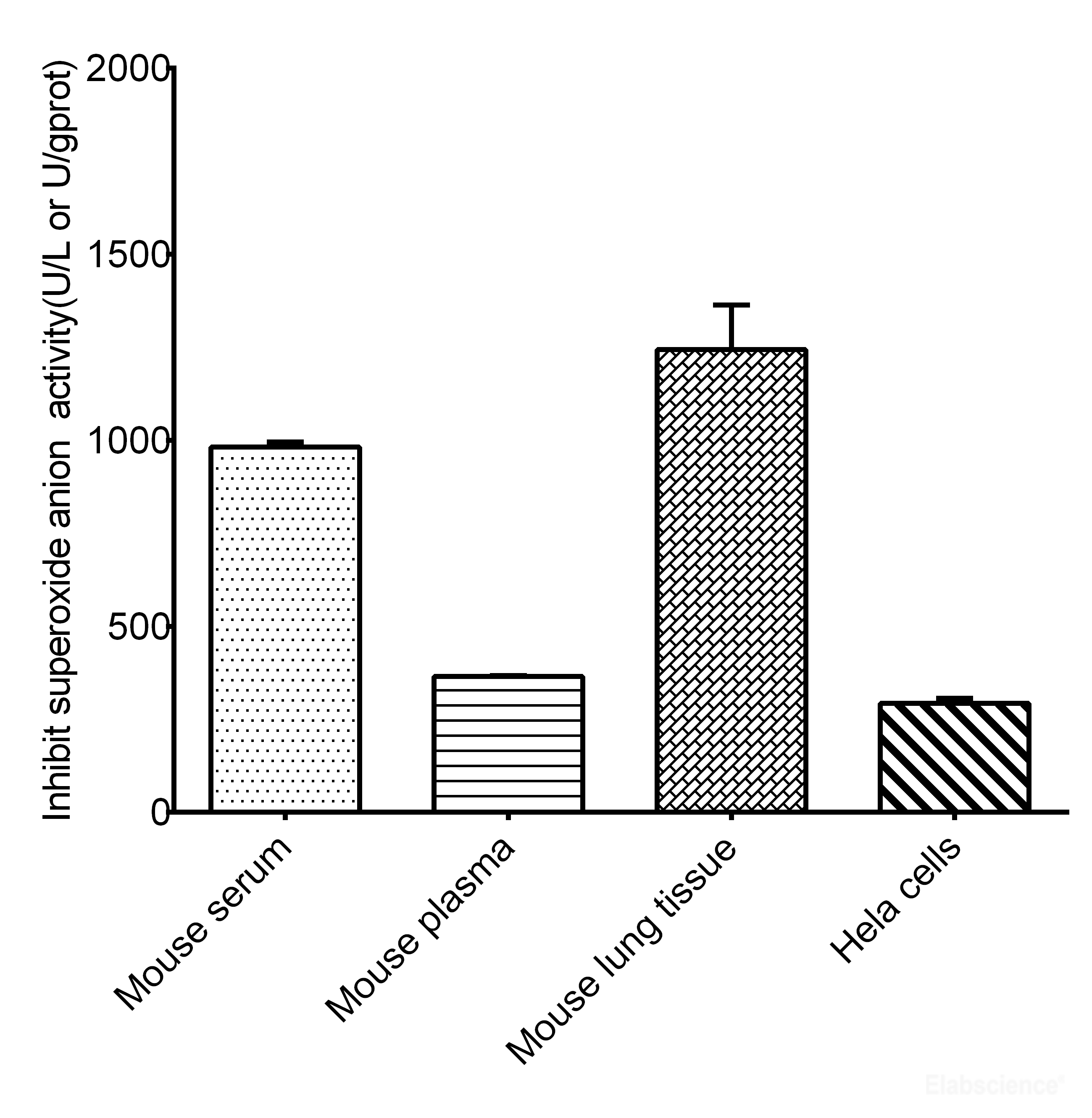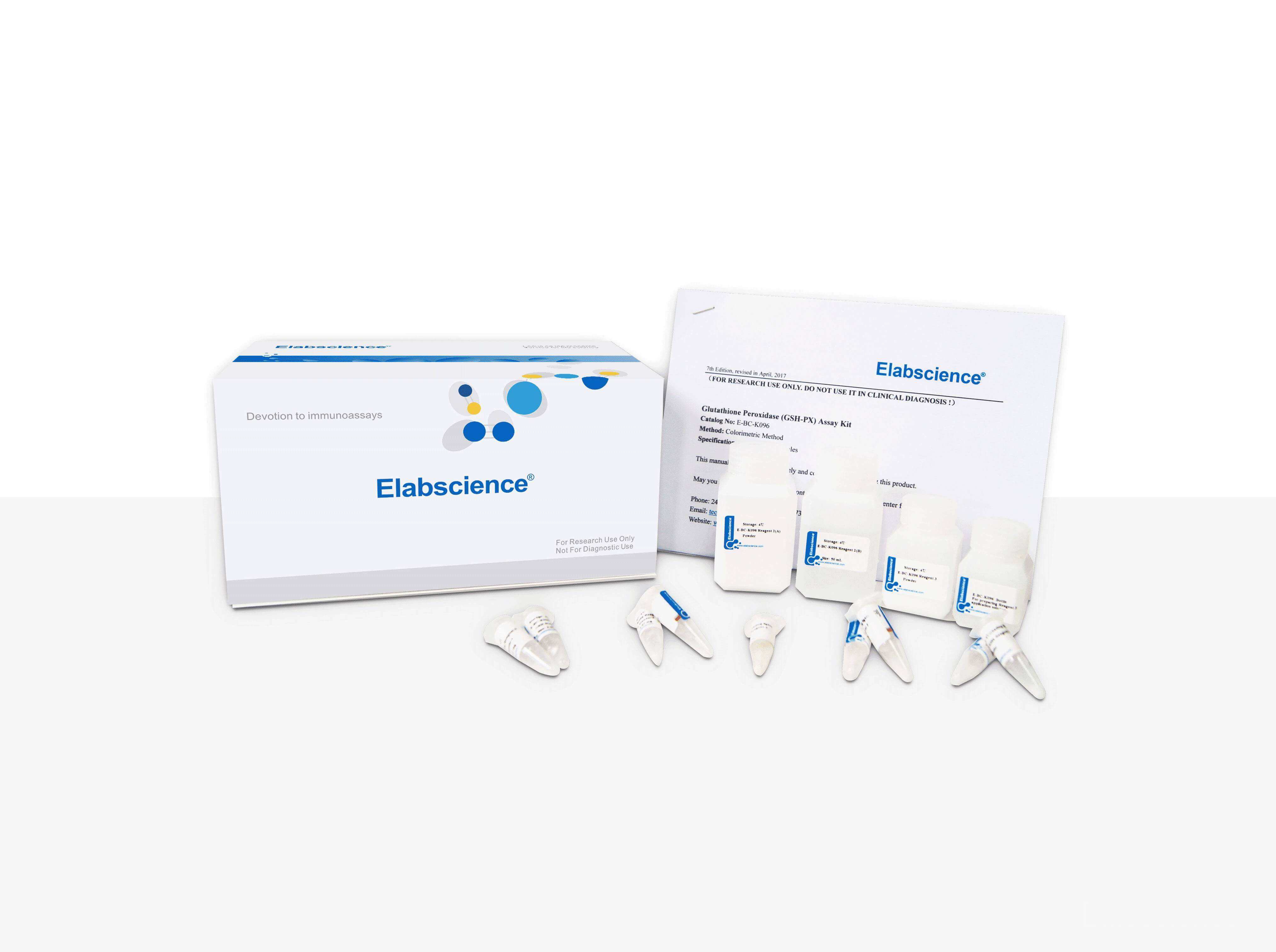Before the formal experiment, it needs to choose 2-3
samples for diluting a series of diluent and determine the dilution factor when
the SOD inhibition ratio is 30%~65% (the optimal inhibition
ratio is the range of 40%~60%).
Inhibition ratio=[(A1-A2)-(A5-A6)]×100%/(A1-A2)
Adjust sampling volume: If inhibition ratio > 65%,
need to dilute the sample or decrease the sampling volume than take the test.
If inhibition ratio < 30%, need to increase the sampling volume.
The recommended dilution factor for different samples is as follows (for reference only):
|
Sample type
|
Dilution factor
|
|
Human serum
|
4-7
|
|
Mouse serum
|
15-25
|
|
Rat serum
|
25-35
|
|
Human saliva
|
1
|
|
HepG2 culture supernatant
|
1
|
|
10% Rat brain tissue homogenate
|
150-200
|
|
10% Rat liver tissue homogenate
|
500-600
|
|
10% Mouse liver tissue homogenate
|
500-600
|
|
10% Mouse heart tissue homogenate
|
150-200
|
|
10% Epipremnum aureum tissue homogenate
|
20-30
|
Note: The
diluent is normal saline (0.9% NaCl) or PBS (0.01 M, pH 7.4).









